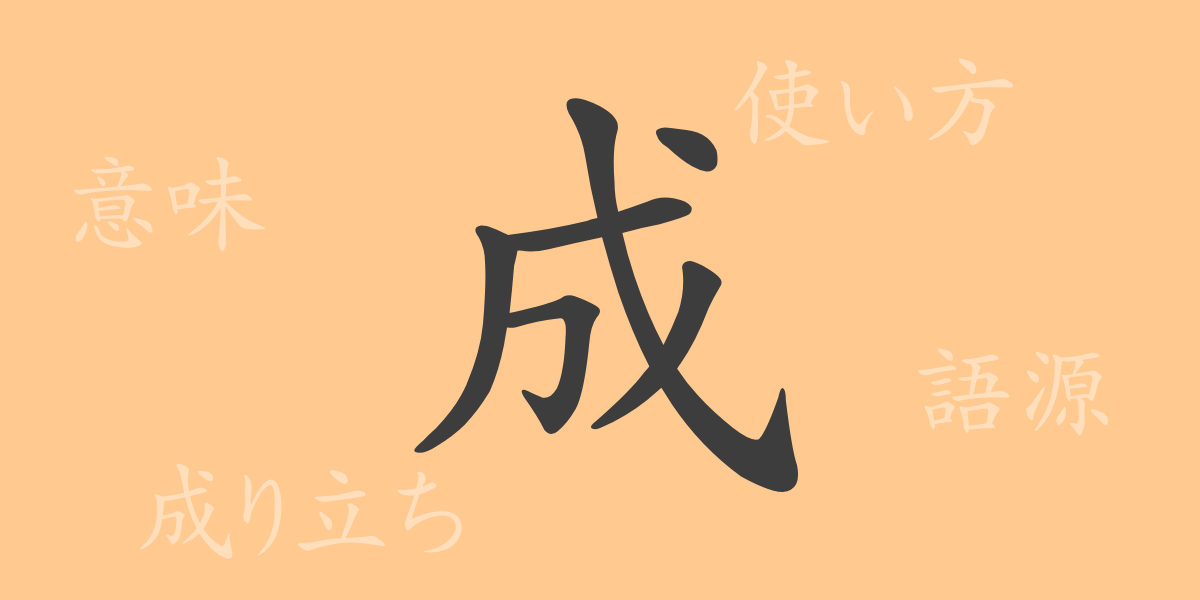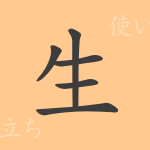Kanji, with its form and meaning, supports the rich expressions of the Japanese language. ‘成’ (せい), a common kanji taught early in school education, is used in various contexts. This article delves into the origins and modern uses of ‘成’, exploring its allure.
Origins of 成
The kanji ‘成’ began in ancient China, originally a pictograph symbolizing achievements erected on a base. Over time, this form evolved to represent actions like ‘becoming’ and outcomes such as ‘accomplishment’.
Meaning and Usage of 成
‘成’ carries meanings like ‘to become’, ‘to accomplish’, and ‘to succeed’. These are used to indicate change, progress, or results and can be interpreted in various contexts. For example, ‘成長’ (growth) refers to maturity or development, while ‘成果’ (achievement) points to the results of efforts.
Readings, Stroke Count, and Radical of 成
The kanji ‘成’ offers fundamental knowledge through its readings and structure:
- Readings: On’yomi ‘セイ’, ‘ジョウ’; Kun’yomi ‘なる’, ‘なす’, ‘なり’
- Stroke Count: ‘成’ consists of 7 strokes.
- Radical: ‘成’ itself serves as a radical.
Phrases and Proverbs Involving 成
Idioms, phrases, and proverbs involving ‘成’ play significant roles in Japanese:
- 成人 (‘せいじん’): Refers to an adult recognized legally of age.
- 成功 (‘せいこう’): Achieving a goal or objective.
- 成就 (‘じょうじゅ’): The fulfillment of a wish or goal.
- 成敗 (‘せいばい’): Judging and punishing a crime.
- ‘鶏を割くに焉んぞ牛刀を用いん’: A proverb meaning one should not use elaborate means for simple tasks.
Conclusion on 成
The kanji ‘成’ is vital for enabling many expressions in Japanese. Understanding the depth of this character, from its historical background to its versatile modern applications, is key to mastering nuanced Japanese usage. Words like growth, success, and achievement intimately tied to our daily lives are inseparable from ‘成’, highlighting its significance in both language and culture.

























